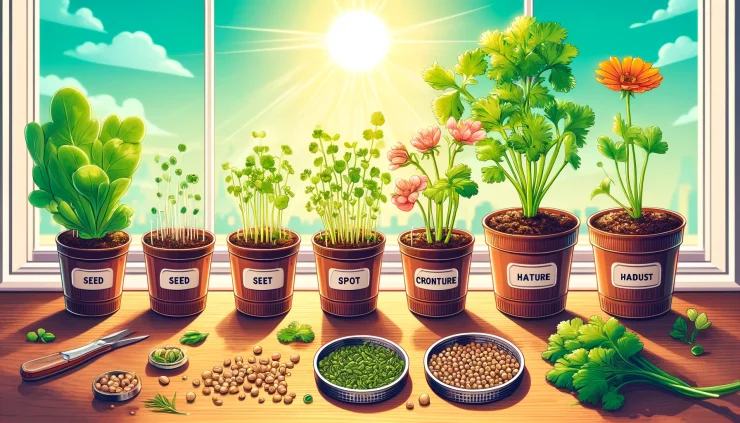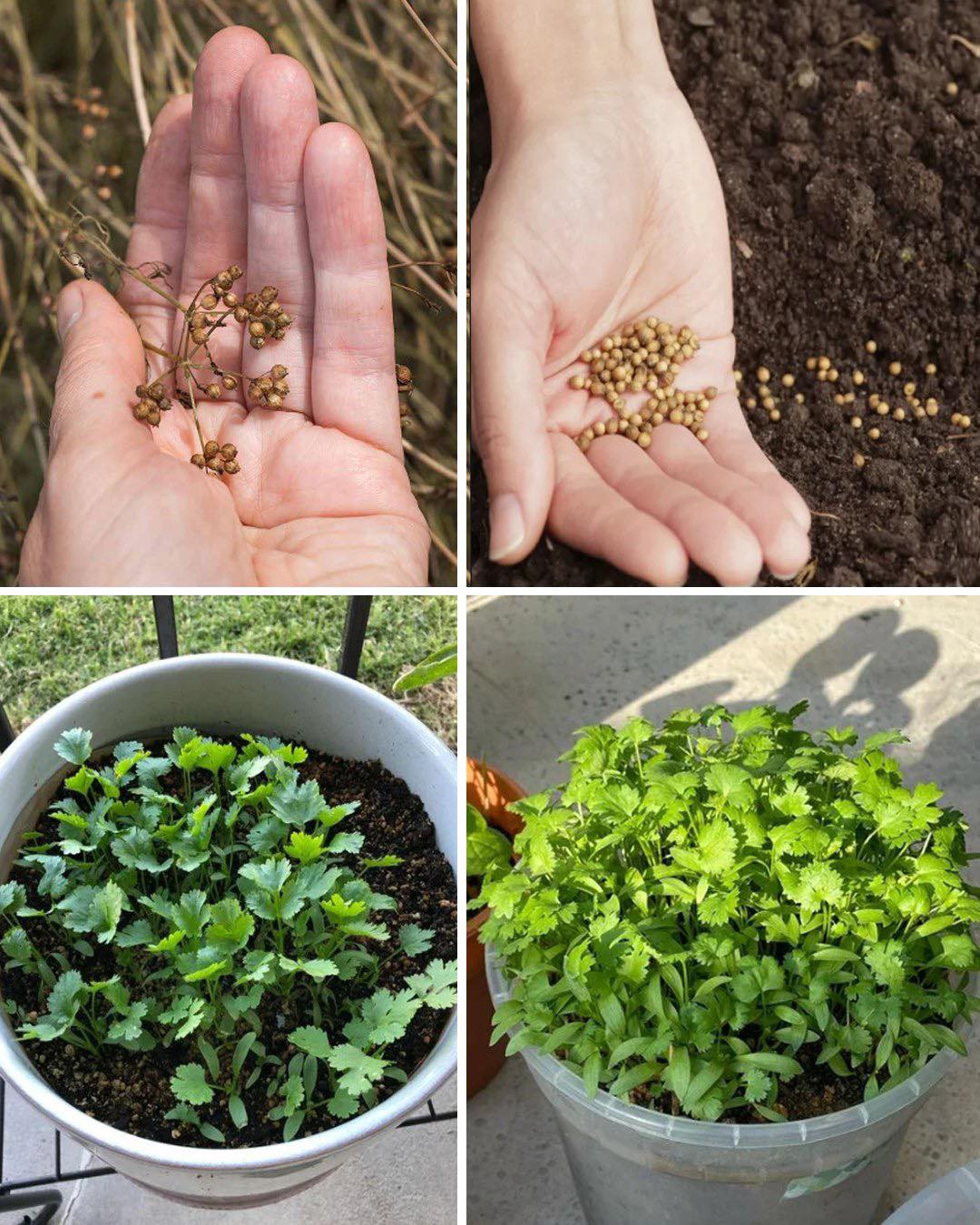Coriander, also known as cilantro or Chinese parsley, is a versatile herb widely used in culinary dishes around the world. Growing coriander at home in containers not only provides you with a fresh and readily available supply of this flavorful herb but also offers the satisfaction of nurturing your own garden. Whether you’re an experienced gardener or a novice enthusiast, here’s a guide to help you grow coriander successfully right at home.

Choosing the Right Container
Selecting the appropriate container is crucial for growing coriander. Opt for a container that is at least 8 to 12 inches deep to accommodate the herb’s long taproot system. Make sure the container has sufficient drainage holes to prevent waterlogging, which can lead to root rot. You can choose clay pots, plastic containers, or wooden boxes, depending on your preference and available space.
Soil Requirements
Coriander thrives in well-draining, fertile soil with a slightly acidic to neutral pH level. Use a lightweight potting mix rich in organic matter, such as compost or aged manure, to ensure optimal growth. Avoid compacted or heavy soils, as they can impede root development and water drainage.
Sowing Coriander Seeds
Coriander seeds can be directly sown into the container or started indoors and later transplanted. If sowing directly, sprinkle the seeds evenly over the soil surface and lightly press them into the soil. Keep the seeds moist until germination, which typically takes 7 to 10 days. Thin out the seedlings to provide adequate spacing, allowing each plant to have ample room to grow.

Sunlight and Watering
Coriander prefers full sun to partial shade, so place the container in a location that receives at least 6 hours of sunlight per day. Water the plants regularly to keep the soil consistently moist but not waterlogged. Be mindful not to overwater, as coriander is susceptible to root rot in soggy conditions. Mulching the soil surface can help retain moisture and regulate soil temperature.
Maintenance and Harvesting
Fertilize the coriander plants with a balanced liquid fertilizer every 2 to 3 weeks to promote healthy growth. Pinch off any flowers that develop to encourage leaf production, as coriander tends to bolt and turn bitter once it flowers. Harvest the leaves when they reach the desired size, typically 3 to 6 inches tall, by snipping them off with scissors or pruning shears. You can also harvest the seeds, known as coriander seeds, when the plant produces umbels of small white flowers.
Growing coriander at home in containers is a rewarding and straightforward process that allows you to enjoy fresh herbs right at your fingertips. With the right container, soil, sunlight, and watering regimen, you can cultivate a thriving coriander garden regardless of your gardening experience. Whether you use it to garnish dishes, add flavor to recipes, or enjoy its aromatic scent, homegrown coriander is sure to enhance your culinary adventures. So roll up your sleeves, sow some seeds, and embark on a journey from seed to spice right in your own home.
News
JJ Redick reacts to Luka Doncic trade for Anthony Davis
In one of the most jaw-dropping moves of the season, the NBA landscape was rocked by the blockbuster trade involving Luka Dončić and Anthony Davis—a swap that has sent ripples of excitement, disbelief, and heated discussion through the league. Among…
Anthony Davis FULL reaction to trade to Mavericks for Luka Doncic
In a blockbuster move that sent shockwaves through the NBA and left fans reeling, Anthony Davis has been traded to the Dallas Mavericks in exchange for Luka Dončić. In the immediate aftermath of the news, Davis took to the media…
Shaq reacts to Dallas Mavericks wanting Kevin Durant after Luka-AD trade 👀
In the constantly shifting world of the NBA, trade rumors and blockbuster moves are a regular part of the season’s drama. The latest twist has fans buzzing: the Dallas Mavericks have reportedly set their sights on acquiring Kevin Durant in…
Donovan Mitchell FILTHY poster dunk on Kristaps Porzingis 😳
In a game filled with high-intensity moments and jaw-dropping highlights, one play in particular has left fans and analysts buzzing about Donovan Mitchell’s latest display of athleticism. Early in the contest, with the atmosphere already charged by an evenly matched…
Joel Embiid hits go-ahead bucket vs Mavs then chats with Anthony Davis after game
In one of the most thrilling contests of the season, Joel Embiid delivered a clutch performance against the Dallas Mavericks, punctuating the game with a go-ahead bucket that sent the home crowd into a frenzy. The atmosphere in the arena…
D’Angelo Russell game winner as Nets hit two 3’s in 3 seconds to win vs Rockets 😱
In one of the most electrifying moments in recent NBA history, D’Angelo Russell delivered an unforgettable game-winner that left fans and commentators in complete awe. With the Brooklyn Nets locked in a tense battle against the Houston Rockets, the outcome…
End of content
No more pages to load











